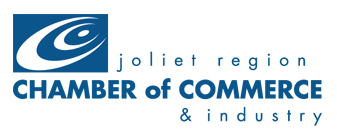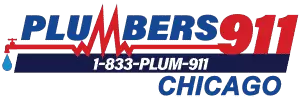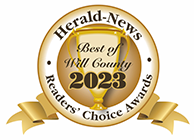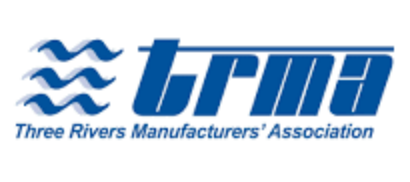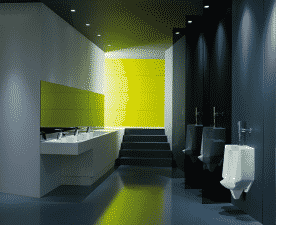
Energy Saving Ideas
How to Create Commercial Building Energy Saving.
America’s 120,000,000 buildings are energy hogs consuming 42% of our primary energy (more than any other sector), 72% of its electricity and 34% of natural gas. For each kilowatt-hour (kWh) energy saving by using energy-efficient technologies, you are reducing the emissions of carbon dioxide (primary cause of global climate change), sulfur dioxide (key component of acid rain), and nitrogen oxides (responsible for smog).
15 Energy Saving Ideas, 6 Ways to Conserve Water, and Funding Retrofit Projects.
Don’t forget about the Small Business Energy Savings Loan Program. Do you own a small business and also own your building? You may be eligible to finance energy efficiency improvements with low rate financing. Make your building work more efficiently, sustainably, and profitably.
1. Educate, train your staff to improve operational efficiency that pays higher dividends. Create Web dashboards to educate everyone and offer tips and rewards for wise behaviors.
2. Regular HVAC maintenance is the best way to minimize service calls, eliminate surprises, and control your total cost of operation. Federal Energy Management Program shows regular maintenance reduces energy use up to 30%, downtime by 35-40%, cuts breakdowns by 70-75% and repair costs by 5-20%. Your best return on investment for energy saving.
3. Monitor key HVAC points like chilled water temperature, hot water temperature, discharge air temperatures, and fan CFM. Setting these values to the minimum levels required for comfort will save energy and reduce stress on mechanical systems.
4. Eliminate equipment noises, shakes, rattles. Excessive vibration is costing you money.
5. New high efficiency, boilers, gas furnace, chiller, cooling tower or rooftop package system can lower operating costs up to 30 percent.
6. Combine chillers in multiple buildings – run efficient ones first. Isolate off-line chillers and cooling towers for energy saving.
7. Add thermostats. Install or adjust programmable duct zoning to control heat-cool temps when rooms are empty.
8. Match HVAC and lighting to occupancy. Install controls that enable systems to provide light, heat and cooling to rooms only when they are occupied.
9. Night pre-cooling involves the circulation of cool air within a building during the nighttime hours with the intent of cooling the structure when utility costs are lower. The cooled structure is then able to serve as a heat sink during the daytime hours, reducing the mechanical cooling required.
10. Heat recovery allows you to pre-heat air or water meaning the heating system needs to use less energy.
11. Pumps in most HVAC systems are oversized. Adjust impellor to proper size for energy savings.
12. Daylight can supplement artificial light while improving productivity. Smart lighting systems use occupancy, time of day and light sensors to control dimmable fixtures and coordinate with automated shade systems.
13. Insulate air ducts in unconditioned space – energy saving gain of 10% to 30%.
14. Plugging air leaks – According to the EPA and Energy Star, save up to 10 percent on utility bills just by plugging building, door, window air leaks.
15. Schedule office cleaning during regular work hours to avoid keeping the lights, heating, and air conditioning on at night.
6 Tips to Conserve Water.
City water rates have risen by 100 to 500 percent in the last decade and are likely to keep rising according to The U.S Dept. of Energy.
Try these six water conservation tips to help support your sustainability goals.
1. Educate your team to improve operational efficiency that pays higher dividends.
Create Web dashboards to educate everyone and offer tips and rewards for wise behaviors.
2. Measure water usage and waste, fix leaks, maintain equipment.
Improve operating practices and keep plumbing system efficient and leak-free. A slow faucet leak can waste 300 gallons of water a month. Leaky toilets can waste thousands of gallons a year – EPA says 20-40% of all toilets leak!
3. Efficient plumbing products.
- Lower water use up to 15% with water saving toilets, urinals, faucets and low flow fixtures for lavatory, showers, motion sensor operated devices, reduced flush or reduced flush urinals.
- Water conserving dishwashers.
- Faucet aerators can reduce water consumption by 25%.
- Low flow shower heads reduces your water waste up to 60%.
- Adding controls to regulate and monitor water usage.
4. Hot water energy savings.
- Old water heater can waste 27% in energy and provide less hot water due to sediment buildup.
- Heat water using recovered heat and solar thermal systems.
- Instantaneous hot water heaters – tankless water heaters are a good choice for the right application.
- Water heater insulation, every bit helps.
- Insulate hot water piping.
5. Toilet & urinal.
- The world flushes up to 30 percent of its drinking water down a drain. According to a Water Conservation Study, the average person flushes the toilet five times a day. That means we could flush a toilet 140,000 times in our life.
- If your toilet was installed before 1994 you could be wasting up to 10,500 gallons each year (per toilet) with a 3.5 to 7 gallons a flush!
- New toilets can save up to 6 gallons per flush.
- Leaky toilet can waste 10,000 gallons a year – EPA says 20-40% of all toilets leak! Toilet flappers last about 5 years.
- Check for toilet leaks. Add food color to the toilet tank and wait 30 minutes. Then check the toilet bowl to see if coloring appears. If so, your toilet leaks. Flush the toilet promptly to make sure tank is not stained.
Waterless urinals – You’ll find waterless urinals in crowded public restrooms. Building owners saw that by using dry urinals, they’d save money on water and sewer charges for thousands of flushes. They’re installed in the Shedd Aquarium in Chicago and New York Mets. Arizona made waterless urinals mandatory in public buildings. By replacing one high water use urinal with a zero water model, you can save an average of 45,000 gallons of water per year.
6. Outdoors.
- One inch of rain on a 1,000SF roof yields 600 gallons of water. This is no longer just a residential option—industry and business leaders have begun to reclaim otherwise wasted water. For example, the new headquarters of Panduit, based in Tinley Park, IL, has a water reclamation system that collects rainwater for non-potable uses; the system is projected to save the building 910,000 gallons of water annually.
- Adopt water-smart landscaping, from using the proper plants to using in-ground sensors to trigger watering only when truly necessary.
FUNDING RETROFIT PROJECTS – STAGE OVER TIME.
Whether you’re a private or public entity, you may qualify for grants or low-interest loans for water conservation projects under state-sponsored initiatives. Performance contracting is another way to fund efficiency projects with no up-front investment. The most rewarding energy saving performance contracts combine water and energy-saving projects. Nicor Gas and ComEd offer some commercial rebates too.
Create a to do list and stage energy saving projects over a number of years.
Small Business Energy Saving Loan Program. Do you own a small business and also own your building? You may be eligible to finance energy efficiency improvements with low rate financing through the Illinois Energy Efficiency Loan Program.
Got questions? We got answers.
Ask PDM Plumbing, Heating & Cooling Since 1885 for a free consultation for Joliet-SW Chicago suburbs. Contact us online.
